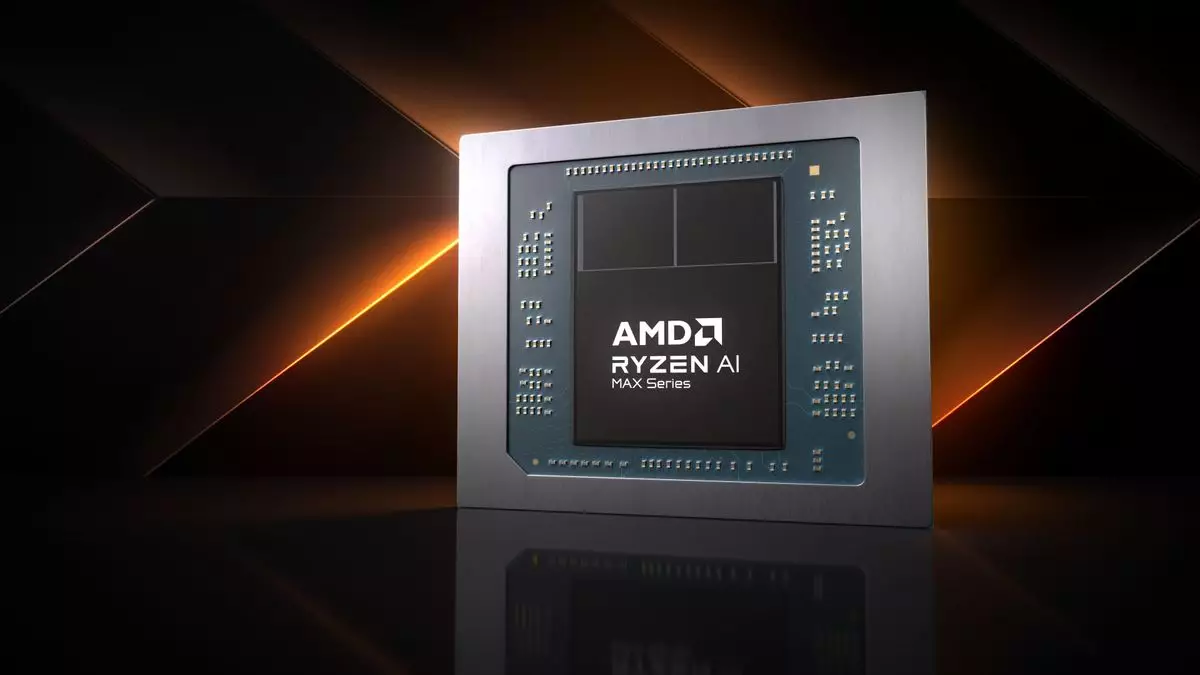The Strix Halo, AMD’s latest APU, has garnered significant attention within the tech community as it prepares for its imminent release. Recently, early benchmarks from 3DMark Time Spy have surfaced, illuminating the performance capabilities of this promising hardware. While these results echo earlier Geekbench findings, they also introduce a level of caution for those anticipating a substantial leap in gaming performance.
The early benchmarks from the Baidu forums, confirmed by sources like Wccftech, showcase the Strix Halo’s integrated GPU achieving a striking score of 10,106 and a CPU score of 5,571 in 3DMark Time Spy. These figures have sparked discussions about where this APU will rank against its competition. Initially assumed to represent the AMD Radeon 8050S, the true identity appears to be the AI Max+ 395 with an 8060S GPU, potentially highlighting a pre-launch error. This clarification is crucial, as it realigns expectations surrounding the chip’s real-world capabilities and performance metrics compared to Nvidia’s offerings.
In essence, the GPU score positions the Strix Halo well, purportedly outperforming the average scores of laptop RTX 4050 models by around 2,000 points and falling just shy of those from RTX 4060 laptops. While this benchmark provides a strong indication of graphical prowess, it’s vital to evaluate it within the broader context of gaming performance, as 3DMark Time Spy may not entirely encapsulate the gaming experience.
The integration of a robust GPU within the Strix Halo, especially given that it does not include a dedicated graphics card, is noteworthy. The APU is anticipated to deliver performance aligned with that of gaming laptops equipped with RTX 4060 graphics, with some speculation suggesting it may even approach the capabilities of an RTX 4070 in a tablet format. This nuanced performance positioning intrigues gamers and developers alike, as it opens doors to powerful mobile gaming experiences — a long-sought-after goal in portable hardware.
However, initial excitement is tempered by the realization that despite the increase in graphical cores, the performance results fell below some loftier expectations. AMD once hinted at the potential for the APU to rival an RTX 4070; now, early tests suggest it may merely align more closely with an RTX 4060. Such discrepancies can be disheartening for tech enthusiasts hoping for ground-breaking advancements in integrated graphics.
What sets Strix Halo apart is its bespoke architecture, utilizing Zen 5-based CPU CCDs alongside an innovative interconnect system. Early development iterations reportedly struggled to balance performance with power efficiency, which underscores AMD’s commitment to engineering excellence. The focus on power efficiency could significantly enhance battery life in gaming laptops, an important factor for mobile gamers. Nevertheless, the ability to configure wattage levels up to 120W introduces variability, indicating that performance may fluctuate considerably depending on the power management by manufacturers.
Intrepid users should be aware that these benchmarks represent a starting line rather than a defined endpoint.
In the rapidly evolving world of gaming hardware, Strix Halo encapsulates both potential and caution. With its innovative architecture and promising benchmark scores, it holds the capacity to redefine integrated APU performance within laptops and tablets. Yet, the performance revelations from early testing prompt a more tempered approach to expectations.
Despite falling short of an RTX 4070’s performance, this APU still signifies a remarkable advancement, especially without the need for discrete graphics. As AMD irons out final details, understanding the implications of such performance metrics in real-world applications will be the key. Ultimately, as users, we must remain optimistic yet realistic, eagerly anticipating official releases to fully evaluate Strix Halo’s impact on mobile gaming.

